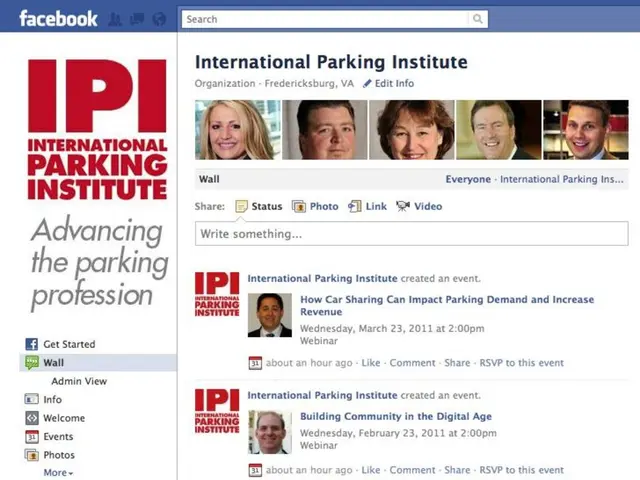Online Bystander Syndrome in the Modern World: The Reason People Don't Act Against Cyberbullying or Other Online Injustices
In today's digital landscape, the bystander effect—a psychological phenomenon observed since the 1960s—is amplified as people are less likely to intervene in online emergencies or threatening situations, even when many others witness the same events. This shift has profound implications for both individuals and society.
The digital bystander effect arises from a confluence of factors, including increased anonymity, the diffusion of responsibility across vast online communities, viral media trends, and the norms imposed by various platforms. As face-to-face interaction diminishes and online interactions become more prevalent, understanding this dynamic is crucial in fostering more compassionate and proactive virtual communities.
Diffusion of responsibility plays a significant role in the digital bystander effect. In a physical setting, the presence of numerous witnesses might lead to reduced individual accountability, as each person assumes someone else will take action. In the digital world, this scenario is exacerbated by the sheer scale of online platforms and the lack of direct social pressure.
Online anonymity plays a role by removing social cues that might encourage intervention. Without the physical presence of others, users may feel emboldened to ignore inappropriate behavior or distressing situations. The lack of emotional connection to online communities can also lead to indifference.
Pluralistic ignorance, the misinterpretation of a situation as less serious when others do not seem concerned, also contributes to the digital bystander effect. In the absence of non-verbal cues, people may dismiss a situation as benign, inadvertently reinforcing inaction among other bystanders.
Evaluation apprehension, or fear of negative judgment, is another factor deterring online intervention. Users might hesitate to act for fear of public backlash or being perceived as overly sensitive or misguided.
Compassion fatigue, a result of constant exposure to crisis appeals and distressing content, has the potential to overwhelm users, reducing their motivation to intervene in individual cases.
Desensitization to online aggression can also encourage passivity, as toxic environments normalize harmful behavior. Uncertainty and lack of skills can hinder intervention, as bystanders may be unsure how to respond effectively or fear worsening the situation.
To combat the digital bystander effect, a combination of strategies is required. Empowering users through education and awareness can encourage active support. Platforms can facilitate anonymity with accountability mechanisms that allow users to intervene safely. Encouraging positive social norms that prioritize empathy, respect, and support thin the veil of indifference.
Designing user-friendly features—such as readily available reporting tools, visible support for victims, and prompts reminding users to help when witnessing abuse or emergencies—can facilitate intervention. Introducing mental health resources for users can help maintain emotional capacities to assist in potentially overwhelming situations.
Collective action, whether through user groups or designated moderators, can reduce individual apprehension and increase the likelihood of positive action.
Fostering empathetic, inclusive, and supportive virtual communities requires concerted effort from individuals, platforms, and social networks. By actively combating the digital bystander effect, we can cultivate online spaces where assistance, not ignorance, is the norm.
Sources: [1] Bystander Intervention Theory, Utah State University. (n.d.). http://www.usu.edu/student-affairs/safety/bywomyn/education-resources/bystander-intervention-e-chapter-for-strictly-electronic-use/ [Accessed 2022]. [2] Purkiss, D. S. (2002). Mass-mediated Social Influence: The Breakdown of Normative Control and the Emergence of Deviant Responses to Crimes. Oxford Journal of Legal Studies, 22(41), 507-540. [3] Slater, M. X., Turner, G., & Sle Luke, K. (2018). Social Media and Society. Open Book Publishers. [4] Zheng, H., Lin, Z., Liu, Z., & Cheng, X. (2014). The Social Influence of Online Responses to Telephone Solicitation Agreements: A Test of Bystander Theory of Intervention. Journal of Marketing Research, 51(4), 672-689.
The digital landscape has implications for mental health, as the bystander effect amplified online can lead to indifference or inaction, even when many witness distressing situations. In other words, the digital bystander effect can hinder health and wellness by reducing compassion and proactive behavior. To combat this, science-based strategies including education, accountability mechanisms, empathy-focused social norms, user-friendly features, and mental health resources can be implemented to cultivate supportive virtual communities. For example, platforms can introduce reporting tools, and reminders to help when witnessing abuse or emergencies, while mental health resources like stress management techniques and counseling services can support users in potentially overwhelming situations. Moreover, fostering inclusive and empathetic online cultures can encourage active intervention, ultimately reducing mental health risks associated with online passivity.







